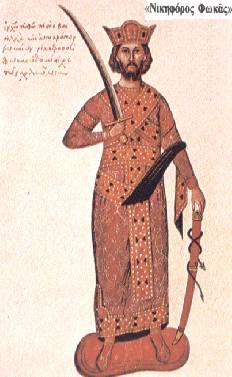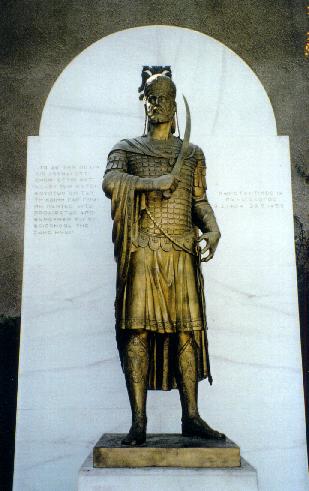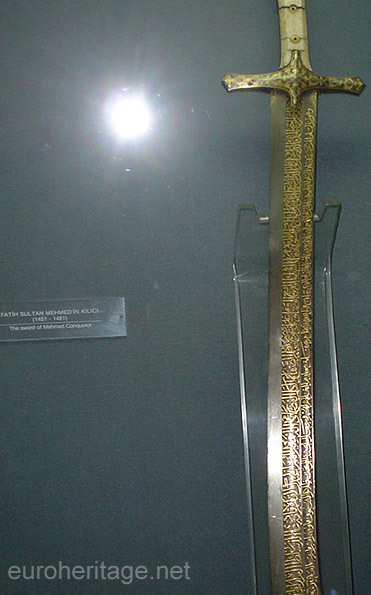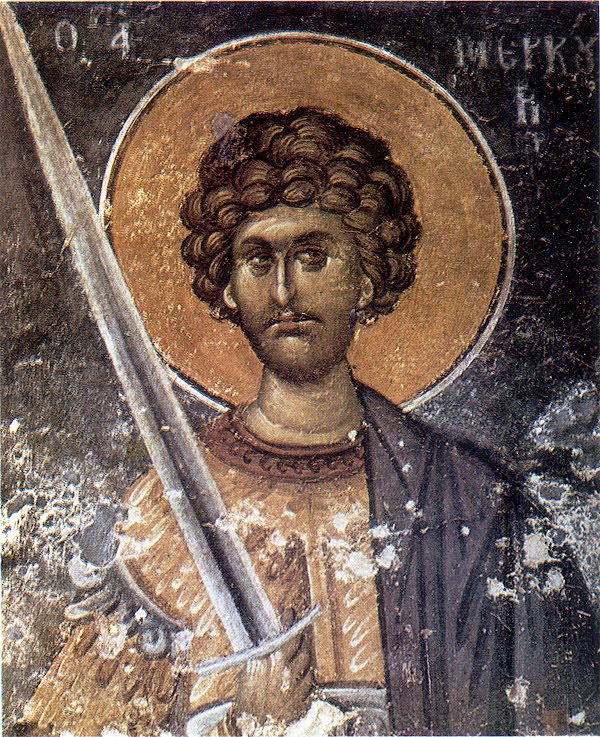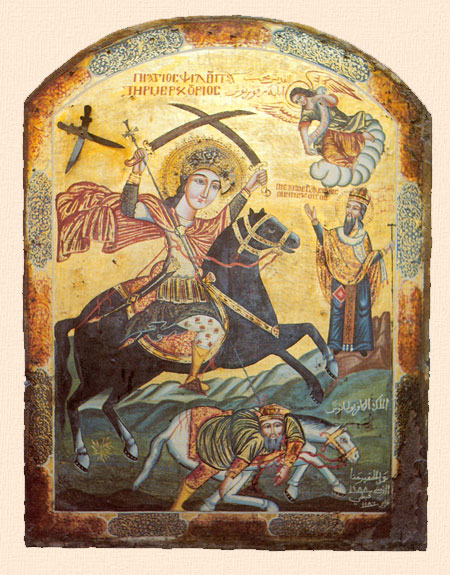Posts: 649 Location: Italy
Tue 03 Nov, 2009 3:25 pm
Sword on the left belonged to Suleiman the Magnificent.
The sword on the right is mentioned by David Nicolle-Constantinople 1453 - pag. 24, probably of Constantine VI.
Comes from Istanbul, master greek. Name unknown.
Measurements of this sword are:
total length 966 mm.
Blade length 825 mm.
blade width 33 mm.
Weight 570 g.
Lett Ruffini - 1931
Blade very curved, black damask of Istanbul. Enlarged toward the tip. Only on the right, the blade is decorated in gold, precious stones, 6 red, a Madonna with child, two angels holding a crown with three red stones. A writing in greek all in gold.
On the left a little fuller, to the medium.
Was brought to Turin from Ronualdo Tecco in the service of Charles Albert.
It is certain that belonged to Constantin Brancoveanu, Prince of Valdacchia and Moldova. 1688-1714
This blade has been re-hilt and used later in turkish environment.
Lionello Boccia - Armeria Reale di Torino - P. 307-405
For this author that I respect very much, it is unlikely that belonged to Constantine XI.
I hope this helps.
Ciao
Maurizio
 Attachment: 169.97 KB
Attachment: 169.97 KB

pag. 307
 Attachment: 53.11 KB
Attachment: 53.11 KB
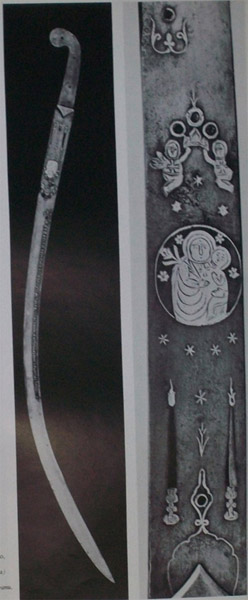
The sword...
 Attachment: 168.96 KB
Attachment: 168.96 KB
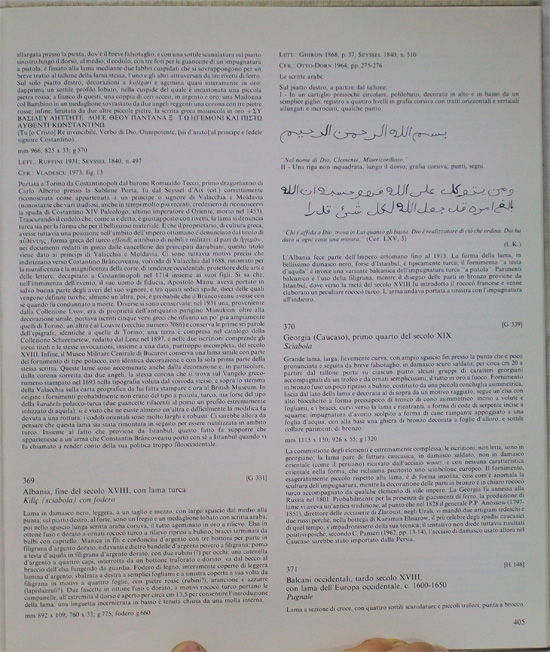
My translation is just a small summary. pag. 405
 Attachment: 44.88 KB
Attachment: 44.88 KB

The English translation is on page. 24 of the book by David Nicolle
